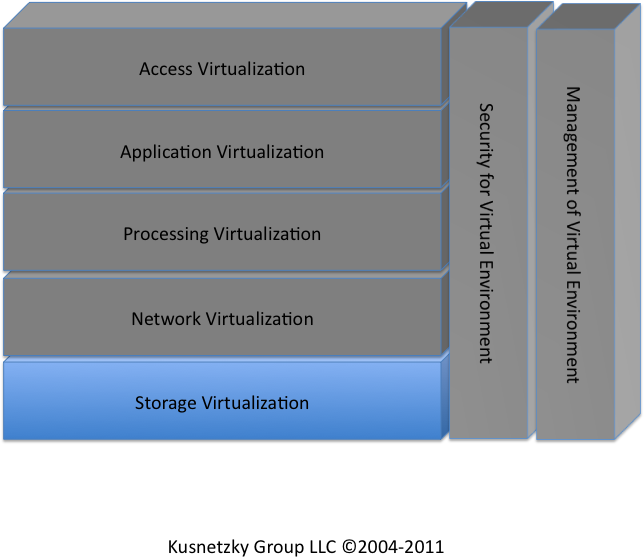Chapter 6. Storage Virtualization: Where Are Your Files and Applications?
What Is Storage Virtualization?
Our journey into the layers of virtualization continues and we have reached the bottom of the model. The remaining two layers of virtualization technology touch all of the others. This time, we’re going to examine storage virtualization (see Figure 6-1). Storage virtualization refers to the tools used to present an artificial view of the storage environment.

Storage virtualization often is supported by storage servers. Clients and servers need not know where the files they’re processing really reside. They also need not know what type of storage device holds their applications and data. The storage devices could be based on rotating media, such as traditional disk drives, or solid state technology, such as SSDs or dynamic random access memory (DRAM).
Once again, this technology was originally developed for mainframe systems in the late 1960s, was recreated on minicomputers (now called midrange machines) in the 1980s, and started appearing on industry-standard systems (X86-based) in the early 1980s. The industry is still in the middle of a transition from server- or client-attached storage to virtual storage that is located in the network.
This type of virtualization is often used in conjunction with several other types.
What Does Storage Virtualization ...
Get Virtualization: A Manager's Guide now with the O’Reilly learning platform.
O’Reilly members experience books, live events, courses curated by job role, and more from O’Reilly and nearly 200 top publishers.

